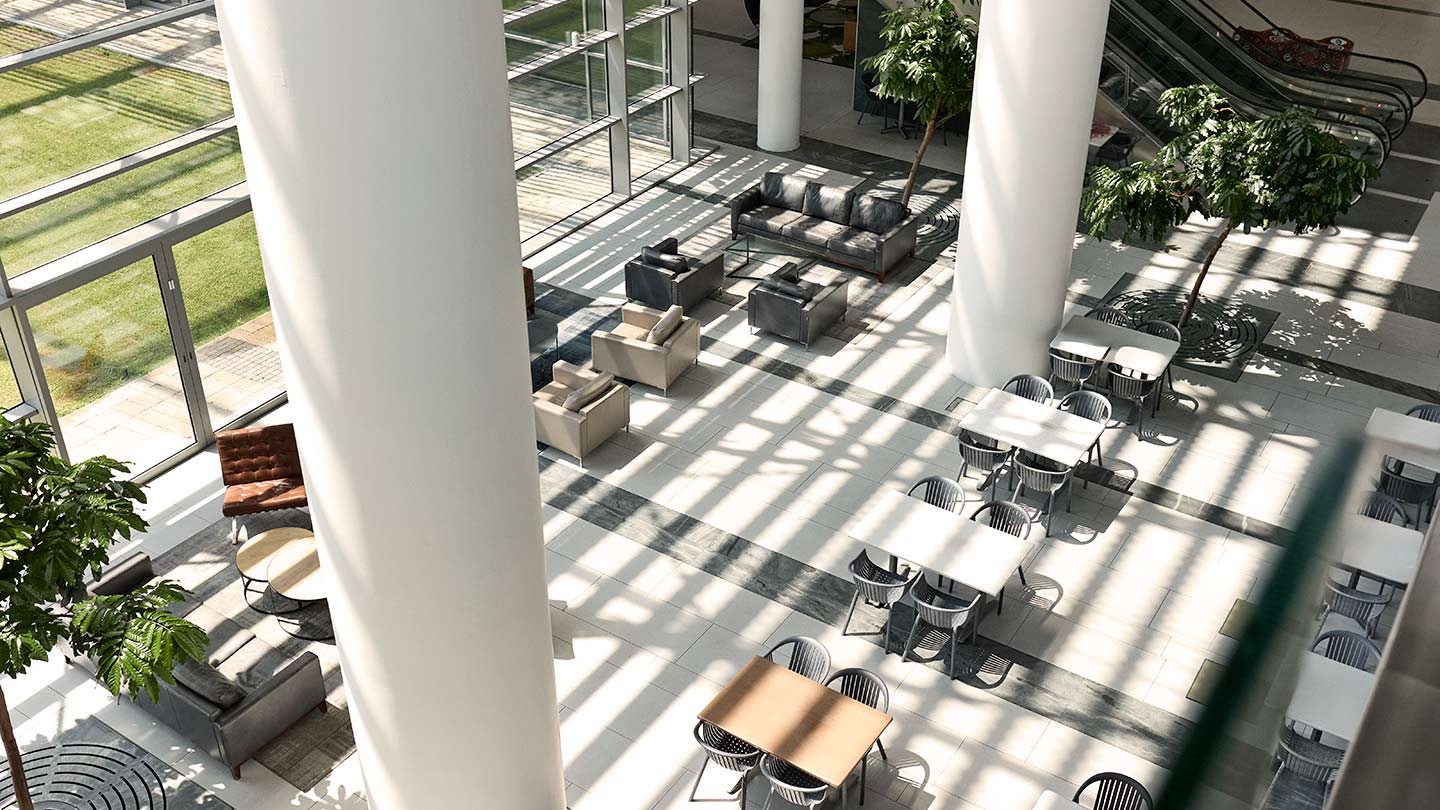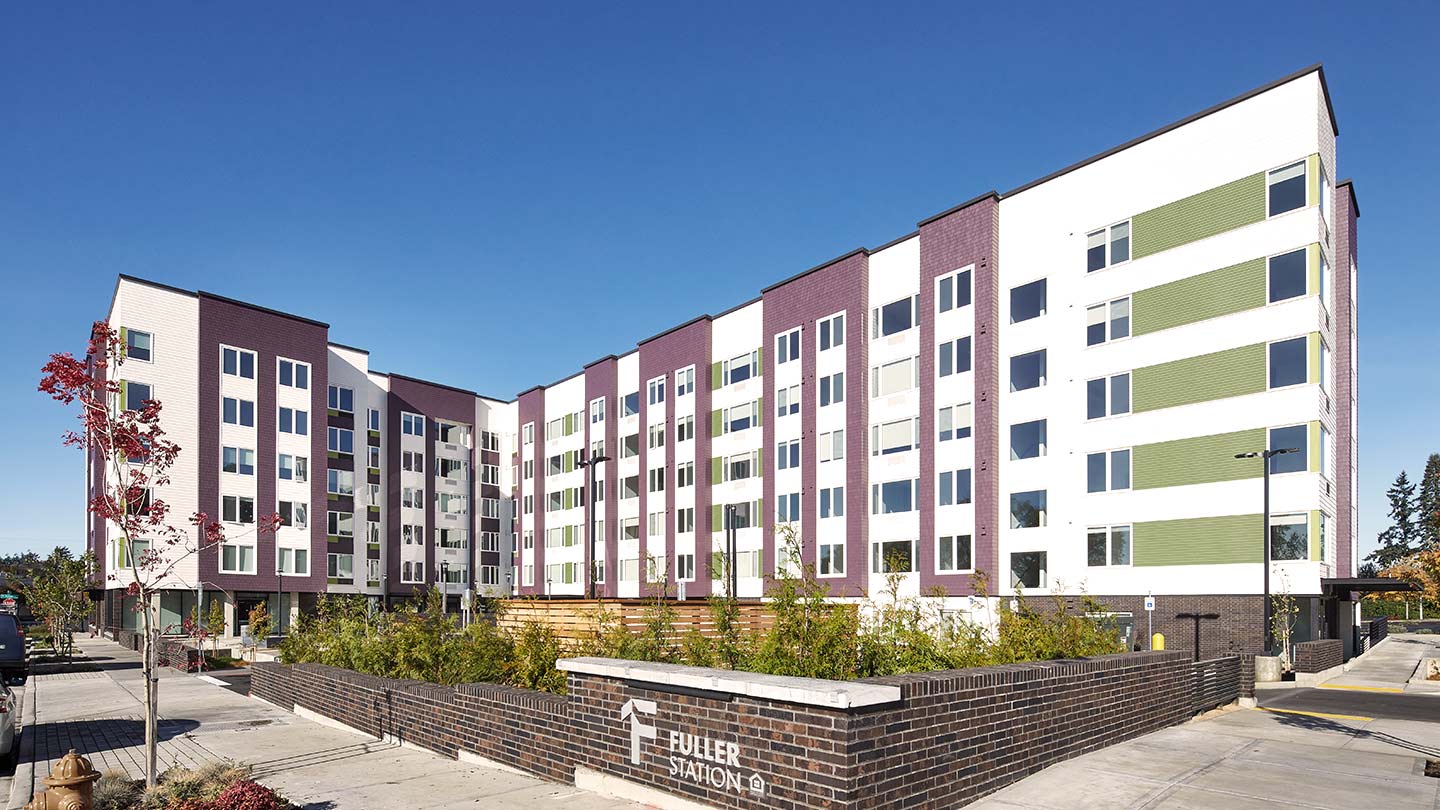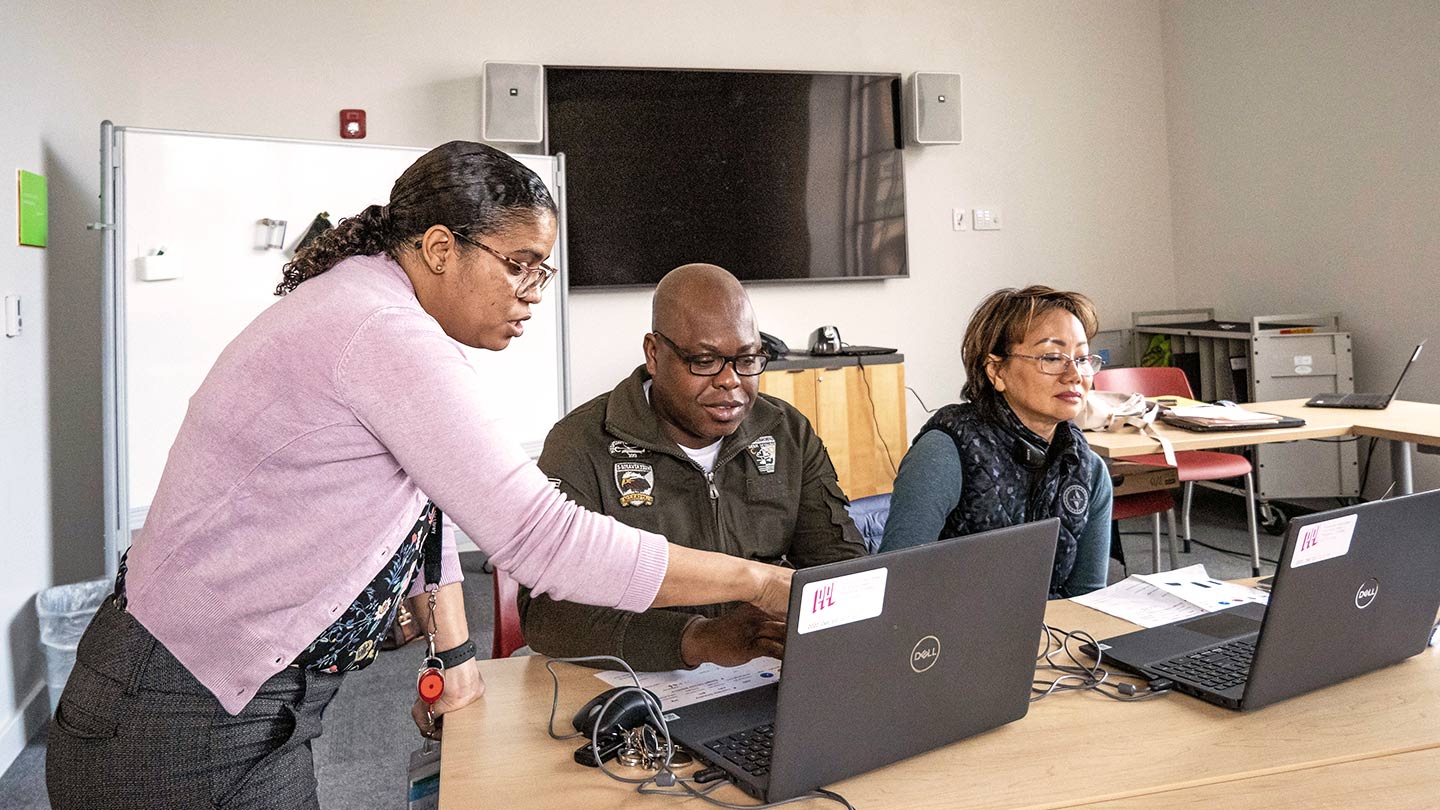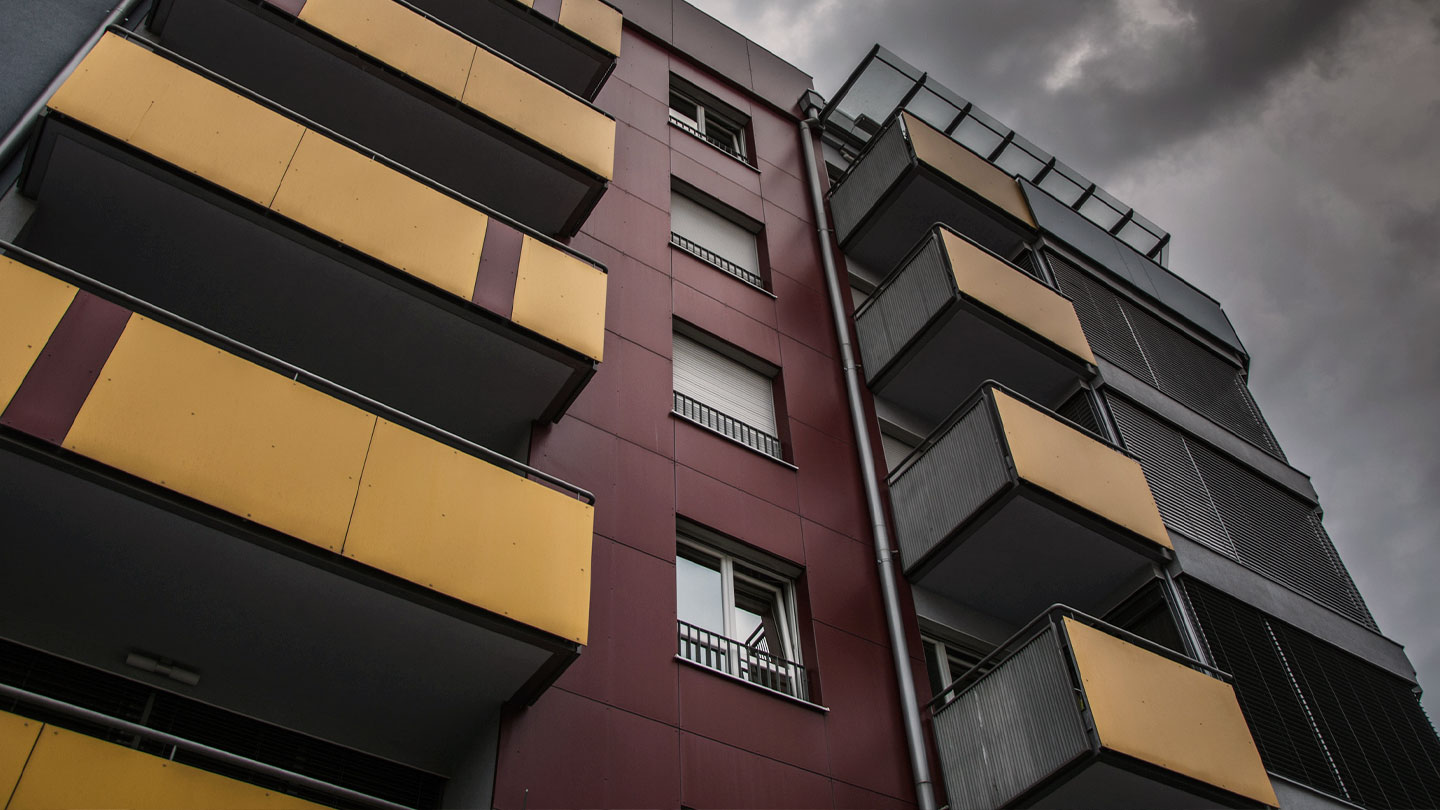From startups to legacy brands, you're making your mark. We're here to help.
-
Innovation Economy
Fueling the success of early-stage startups, venture-backed and high-growth companies.
-
Midsize Businesses
Keep your company growing with custom banking solutions for middle market businesses and specialized industries.
-
Large Corporations
Innovative banking solutions tailored to corporations and specialized industries.
-
Commercial Real Estate
Capitalize on opportunities and prepare for challenges throughout the real estate cycle.
-
Impact Banking & Advisory
When our communities succeed, we all succeed. Local businesses, organizations and community institutions need capital, expertise and connections to thrive.
-
International Banking
Power your business' global growth and operations at every stage.
Key Links
Prepare for future growth with customized loan services, succession planning and capital for business equipment.
-
Asset Based Lending
Enhance your liquidity and gain the flexibility to capitalize on growth opportunities.
-
Equipment Financing
Maximize working capital with flexible equipment and technology financing.
-
Trade & Working Capital
Experience our market-leading supply chain finance solutions that help buyers and suppliers meet their working capital, risk mitigation and cash flow objectives.
-
Syndicated Financing
Leverage customized loan syndication services from a dedicated resource.
-
Commercial Real Estate
Capitalize on opportunities and prepare for challenges throughout the real estate cycle.
-
Employee Stock Ownership Plans
Plan for your business’s future—and your employees’ futures too—with objective advice and financing.
Key Links
Serving the world's largest corporate clients and institutional investors, we support the entire investment cycle with market-leading research, analytics, execution and investor services.
-
Institutional Investors
Putting your long-tenured investment teams on the line to earn the trust of institutional investors.
-
Markets
Direct access to market leading liquidity harnessed through world-class research, tools, data and analytics.
-
Prime Services
Helping hedge funds, asset managers and institutional investors meet the demands of a rapidly evolving market.
-
Global Research
Leveraging cutting-edge technology and innovative tools to bring clients industry-leading analysis and investment advice.
-
Securities Services Solutions
Helping institutional investors, traditional and alternative asset and fund managers, broker dealers and equity issuers meet the demands of changing markets.
Key Links
Providing investment banking solutions, including mergers and acquisitions, capital raising and risk management, for a broad range of corporations, institutions and governments.
-
Center for Carbon Transition
J.P. Morgan’s center of excellence that provides clients the data and firmwide expertise needed to navigate the challenges of transitioning to a low-carbon future.
-
Corporate Finance Advisory
Corporate Finance Advisory (“CFA”) is a global, multi-disciplinary solutions team specializing in structured M&A and capital markets. Learn more.
-
Development Finance Institution
Financing opportunities with anticipated development impact in emerging economies.
-
Sustainable Solutions
Offering ESG-related advisory and coordinating the firm's EMEA coverage of clients in emerging green economy sectors.
-
Mergers and Acquisitions
Bespoke M&A solutions on a global scale.
-
Capital Markets
Holistic coverage across capital markets.
Your partner for commerce, receivables, cross-currency, working capital, blockchain, liquidity and more.
Key Links
A uniquely elevated private banking experience shaped around you.
-
Banking
We have extensive personal and business banking resources that are fine-tuned to your specific needs.
-
Investing
We deliver tailored investing guidance and access to unique investment opportunities from world-class specialists.
-
Lending
We take a strategic approach to lending, working with you to craft the right financing solutions matched to your goals.
-
Planning
No matter where you are in your life, or how complex your needs might be, we’re ready to provide a tailored approach to helping your reach your goals.
Whether you want to invest on your own or work with an advisor to design a personalized investment strategy, we have opportunities for every investor.
-
Invest on your own
Unlimited $0 commission-free online stock, ETF and options trades with access to powerful tools to research, trade and manage your investments.
-
Work with our advisors
When you work with our advisors, you'll get a personalized financial strategy and investment portfolio built around your unique goals-backed by our industry-leading expertise.
-
Expertise for Substantial Wealth
Our Wealth Advisors & Wealth Partners leverage their experience and robust firm resources to deliver highly-personalized, comprehensive solutions across Banking, Lending, Investing, and Wealth Planning.
Explore a variety of insights.
Key Links
Insights by Topic
Explore a variety of insights organized by different topics.
Key Links
Insights by Type
Explore a variety of insights organized by different types of content and media.
Key Links
We aim to be the most respected financial services firm in the world, serving corporations and individuals in more than 100 countries.
Key Links
- Insights
- Real Estate
- Commercial Real Estate
- Sole purpose: An old shoe factory is helping grow a neighborhood
Side note:
Soft music plays.
Logos:
J.P.Morgan and Chase.
Text on screen:
'Milwaukee Fortress: Preserving the past while serving the future.'
Jonathan Beck:
Growing up, I was always into history.
On screen:
Text appears over a man in a suit, speaking from a restored building with an exposed brick wall:
Text on screen:
'Jonathan Beck, Development Project Manager, The Alexander Company.'
Jonathan Beck:
I was just almost mesmerized by a lot of the urban fabric and curious about the decay of a lot of it.
On screen:
Photos show a weathered five-story building with a stained concrete courtyard and rusted fire escapes. Inside the crumbling red-brick exterior, a broken piano leans against a support beam near a heap of building materials and trash.
Jonathan Beck:
And I used to be a newspaper boy and I would read about these types of developments. So I mean, I was familiar with the Alexander Company from when I was 10 years old.
Text on screen:
Text appears: 'The Alexander Company wanted to transform the Fortress building in Milwaukee and preserve its historic presence.'
On screen:
Now, the restored red-brick building stands on a modern street corner.
Jonathan Beck:
Alexander Company was both the developer and the architect in the Milwaukee Fortress building.
On screen:
A historic drawing shows the five-story building as a shoe factory surrounded by horse-drawn carriages and trolleys.
Jonathan Beck:
But it was one of the largest tanneries in the world making something like 9,000 pairs of shoes a day.
On screen:
Old footage shows hundreds of men pouring into the building, a sewing machine stitching a seam, and a worker polishing a finished pair of leather boots.
Jonathan Beck:
It got developed in phases between 1892 to 1912, and we always kind of had our eye on this project as a potential to repurpose into what it is now.
On screen:
Jonathan admires framed historic documents on the wall honoring the F. Mayer Boot and Shoe company.
Jonathan Beck:
We've done a lot of, some of the most complicated projects in the country. Generally when we're tackling these types of projects, we're both trying to figure out the financial puzzle and then also the design puzzle.
On screen:
Jonathan takes a call at his desk, and types on his laptop. Then, text appears over a man in a white dress shirt and blazer:
Text on screen:
'Shannon Metoxen, Milwaukee Division Manager, JP Cullen.'
Shannon Metoxen:
What's unique in these jobs is you really have to get in and understand these jobs. These aren't something that you just look at a print and you put a price to.
On screen:
A photo shows a crane over the building, covered in scaffolding. More photos show a long hall under construction, and workers framing doorways. Another builder walks through the courtyard.
Shannon Metoxen:
We spent a lot of time upfront walking the building.
On screen:
Text appears over a man with a beard and glasses:
Text on screen:
'James Madlom, CEO, Mueller Communications.'
James Madlom:
This is an opportunity to raise awareness of a site like this. Introduce the community of Milwaukee to the country, to this rich historic site.
On screen:
Another illustration shows the building in color, and a black and white photo shows a group of men and boys in a fabrication room. Now, a man in a grey suit:
Text on screen:
'Peter Zanghi, President, Milwaukee Preservation Alliance:'
Peter Zanghi:
Well any community, when they're going to look at a project like this, it's going to require a little bit more creativity on how to get it financed. This project would not have happened without historic tax credits, both at the federal and the state level.
On screen:
A man smiles in a blazer.
Text on screen:
'Tim Karp, Historic Tax Credit, JPMorgan Chase:'
Tim Karp:
It's a great economic development tool.
On screen:
Tim and Jonathan gaze out from the rooftop of the Fortress building, which overlooks downtown Milwaukee.
Tim Karp:
A lot of the projects we do are in areas that are changing or developing or undergoing some renaissance, and to help spur along that additional redevelopment is important to the firm.
Text on screen:
Text appears: 'The project has been successful, drawing visitors and helping spur neighborhood development. The 192,000-square-foot building includes: 132 market-rate apartments, 12,000 square feet of community amenities, and 25,000 square feet of commercial space.'
Tim Karp:
So seeing a building that's tired, has a lot of deferred maintenance, upgraded and come to new life is a really exciting part of all of our historic tax credit equity investments and is a really cool thing for us to see.
On screen:
Before and after images show a basement space transformed into a warmly-lit lounge and offices, and a crumbling brick room with arched windows restored and stylishly furnished. An abandoned office space with old carpeting becomes a modern foyer with polished wood floors. Peter:
Peter Zanghi:
We always hope that whatever kind of restoration goes on that that is serving a need in the community…
On screen:
Community members work in a cafe space, exercise in a gym, and talk over coffee in a courtyard. A brick-walled apartment space is filled with modern furniture and natural light.
Peter Zanghi:
…that it's acting as a catalyst, that it's drawing in a new investment that may not otherwise have been there.
On screen:
A modern sign on the corner of the building has an updated tower-shaped logo. Restored offices have stylish furniture, modern technology, and greenery.
Peter Zanghi:
We definitely don't want to see buildings just preserved in Amber. We want to see them reused for whatever the need is today while respecting its past.
On screen:
An archway leads to a dining room with geometric wallpaper, and open-concept apartments have large arched and gridded windows looking out over the city.
Peter Zanghi:
Everyone who's been in here just is really in amazement of how it was brought back. It's a pretty cool way to serve the community.
On screen:
More before and after photos show old wooden doorways opened up and transformed into connected living and office spaces. James:
James Madlom:
It's magical what you see in a historic project like this. These walls that have history and tell stories. They get to tell new stories in these spaces.
Logos:
J.P.Morgan and Chase.
Text on screen:
'Milwaukee Fortress: Preserving the past while serving the future.'
Side note:
Disclaimers appear under an icon that reads: 'Equal Housing Lender.'
Text on screen:
Chase, J.P. Morgan, and JPMorgan Chase are marketing names for certain businesses of JPMorgan Chase & Co. and its affiliates and subsidiaries worldwide (collectively, “JPMC”, “We”, “Our” or “Us”, as the context may require).
We prepared these materials for discussion purposes only and for your sole and exclusive benefit. This information is confidential and proprietary to our firm and may only be used by you to evaluate the products and services described here. You may not copy, publish, disclose or use this information for any other purpose unless you receive our express authorization.
These materials do not represent an offer or commitment to provide any product or service. In preparing the information, we have relied upon, without independently verifying, the accuracy and completeness of publicly available information or information that you have provided to us. Our opinions, analyses and estimates included here reflect prevailing conditions and our views as of this date. These factors could change, and you should consider this information to be indicative, preliminary and for illustrative purposes only. This Information is provided as general market and/or economic commentary. It in no way constitutes research and should not be treated as such.
The information is not advice on legal, tax, investment, accounting, regulatory, technology or other matters. You should always consult your own financial, legal, tax, accounting, or similar advisors before entering into any agreement for our products or services. In no event shall JPMorgan Chase or any of its directors, officers, employees or agents be liable for any use of, for any decision made or action taken in reliance upon or for any inaccuracies or errors in, or omissions from, the information in this material.
The information does not include all applicable terms or issues and is not intended as an offer or solicitation for the purchase or sale of any product or service. Our products and services are subject to applicable laws and regulations, as well as our service terms and policies. Not all products and services are available in all geographic areas or to all customers. In addition, eligibility for particular products and services is subject to satisfaction of applicable legal, tax, risk, credit and other due diligence, JPMorgan Chase’s “know your customer,” anti-money laundering, anti-terrorism and other policies and procedures.
Products and services may be provided by Commercial Banking affiliates, securities affiliates or other JPMC affiliates or entities. In particular, securities brokerage services other than those that can be provided by Commercial Banking affiliates will be provided by appropriate registered broker/dealer affiliates, including J.P. Morgan Securities LLC and J.P. Morgan Institutional Investments Inc. Any securities provided or otherwise administered by such brokerage services are not deposits or other obligations of, and are not guaranteed by, any Commercial Banking affiliate and are not insured by the Federal Deposit Insurance Corporation.
JPMorgan Chase Bank, N.A. Member FDIC. Copyright 2023 JPMorgan Chase & Co. All rights reserved.
END
As the development project manager at The Alexander Company, which specializes in historic preservation and adaptive reuse, Jonathan Beck uses the Historic Tax Credit (HTC) program to preserve and transform buildings across the country.
The Fortress in Milwaukee, Wisconsin is a prime example. Located in the city’s Brewers Hill neighborhood, the neoclassical structure houses one- and two-bedroom lofts along with commercial space occupied by Mueller Communications and construction company JP Cullen.
But before it became home to market-rate apartments, the Fortress was a sprawling factory where workers produced thousands of shoes aday. Here’s a look at its storied past—and transformed present.
1880
Frederick Mayer opens the F. Mayer Boot and Shoe Company a few blocks from the Milwaukee River.
1892
Architect Herman P. Schnetzky oversees the shoe manufacturer’s first expansion; the building is extended upward and eastward to create a five-story structure.
1899
Architect Eugene Liebert extends the building eastward in the second expansion, which is needed to meet soaring demand. At its peak, the company produced more than 9,000 pairs of shoes each day.
1900-1912
The building’s northern quadrant grows further in 1900, 1906 and 1912. The connected structures of the factory include its namesake tower, which resembles a medieval fortress.
1934
The F. Mayer Boot and Shoe Company shuts down, but the building remains in use for shoe manufacturing.
1938
Milwaukee’s leather industry declines, and the Fortress building is no longer used for shoemaking. A variety of groups occupy the space over the years, including artists, musicians, and a daycare and Montessori school.
2003
Beck first considers the Fortress’ development opportunities. “I was mesmerized by the Fortress and its urban fabric,” Beck said. He knew the surrounding neighborhood was ripe with opportunity, and the Fortress could attract renters. Given the financial constraints, however, the Fortress remained only an idea.
2013
The Wisconsin Legislature raises the state’s Historic Tax Credit rate to 20%—matching the federal HTC. “A lot of white elephant projects that were impossible to take on were now financially feasible,” Beck said.
2015
Discussions between The Alexander Company and the owner of the Fortress begin.
2016
Beck meets Tim Karp, Head of Historic Tax Credit at JPMorgan Chase. “Jonathan knew we were in the market and wanted to finance more HTC deals,” Karp said. “And The Alexander Company had a project in Milwaukee that sounded interesting.”
“When we’re tackling HTC projects, we’re trying to figure out the financial puzzle and the design puzzle,” Beck said.
2017
Financing—including an $8.3 million federal HTC investment from JPMorgan Chase—closes on the Fortress and construction begins. The Alexander Company serves as the developer and architect.
Keeping the building’s historic character
The Fortress features traditional and Cream City bricks— “one of the calling cards of the city,” said Peter Zanghi, President of the Milwaukee Preservation Alliance. And the reddish bricks at the front of the building weren’t originally red. They were painted with pig’s blood when the building was a tannery.
The Alexander Company also preserved more than 1,200 windows, plus the interior’s exposed brick walls and heavy-timber ceilings.
2019
The mixed-use property opens. Its first commercial tenant is JP Cullen, and the building includes 132 apartments and amenities such as a fenced-in dog run and a maker space. “Most historic projects we work on had a prior life, then underwent a period of neglect,” Karp said. “Seeing a building upgraded and given new life is really exciting.”
Karp isn’t the only one pleased with the transformation.
“We always hope that the restoration of any historic building acts as a catalyst, drawing in new investment that may not otherwise have been there,” Zanghi said. “The Brewers Hill neighborhood suffered from disinvestment. And now it's become one of the more desirable neighborhoods in the city. And this helps kickstart even more investment.”
2021
The Alexander Company adds its second commercial tenant, Mueller Communications, in 2021. The two businesses in the building have a close relationship with the project. JP Cullen helped restore the Fortress’ exterior, while Mueller Communications has worked to promote the preservation and conversion of the historic building.
“HTC projects are marathons—they’re not sprints,” Beck said. “From inception in 2015 to 2021, you’re looking at a six-year investment.”
“When people walk into this building and they’re able to see it reincarnated into a modern form—it’s incredible to see their reactions,” said James Madlom, CEO of Mueller Communications. “These walls have history and tell stories from the past. Now the space can tell new stories.”
© 2023 JPMorgan Chase & Co. All rights reserved. JPMorgan Chase Bank, N.A. Member FDIC. Visit jpmorgan.com/commercial-banking/legal-disclaimer for disclosures and disclaimers related to this content.
Related insights

Real Estate
Dec 04, 2025
Learn from JPMorgan Chase commercial real estate leaders and stay up to date on the latest industry news and media coverage.

Real Estate
FHFA’s 2026 multifamily volume caps signal strong activity
Dec 02, 2025
The Federal Housing Finance Agency increased agency multifamily loan purchase caps for 2026. It’s a positive sign for financing availability and market activity.

Real Estate
Why CAM charges are important for property managers
Dec 02, 2025
Shared building spaces impact tenants’ satisfaction and the success of your commercial properties. Find out more about the costs to maintain these areas.

2:29 - Real Estate
If these walls could talk: Seattle
Nov 03, 2025
We’ve invested more than $630 million in Seattle affordable housing and community services over the past decade. Discover Community Development Banking’s local impact.

Real Estate
Helping Guardian Real Estate Services grow its impact
Oct 23, 2025
See how J.P. Morgan’s comprehensive banking solutions helped this multifamily developer and manager grow from a regional leader to national scale—including a $497 million milestone deal.

Real Estate
Why your bank’s onboarding and service teams matter
Oct 06, 2025
Understand the role onboarding and service teams play, and how industry expertise can support commercial real estate success.

Real Estate
Investing in libraries, beyond the books
Oct 02, 2025
Investment helps libraries take on a larger community role, offering services like workforce development, technology classes, homework help and more.

Real Estate
How landlords can prepare for natural disasters
Oct 02, 2025
Severe weather events are on the rise. A business resiliency plan can help commercial real estate owners and operators prepare to minimize the impact on renters and properties.
You're now leaving J.P. Morgan
J.P. Morgan’s website and/or mobile terms, privacy and security policies don’t apply to the site or app you're about to visit. Please review its terms, privacy and security policies to see how they apply to you. J.P. Morgan isn’t responsible for (and doesn’t provide) any products, services or content at this third-party site or app, except for products and services that explicitly carry the J.P. Morgan name.